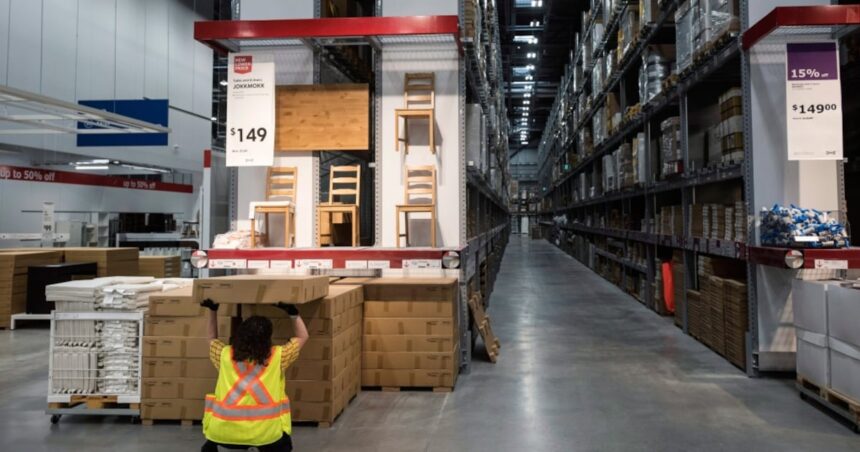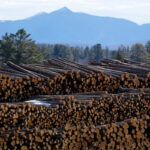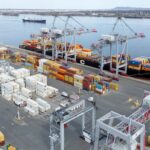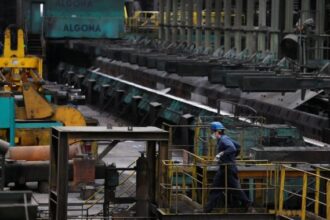The hardwood floors beneath your feet and the oak dining table where your family gathers could soon carry a steeper price tag. Former President Donald Trump announced Tuesday a sweeping 10% tariff on Canadian lumber imports, alongside even higher rates on finished wooden products entering the United States—a move sending shockwaves through North American timber markets and raising alarms for consumers.
“This isn’t just about timber crossing borders,” said Andrew Mitchell, chief economist at Forest Industry Associates. “These tariffs will ripple through everything from new home construction to the chair you’re sitting in right now.”
The announcement came as part of Trump’s broader economic strategy centered on protectionist trade policies. While the 10% baseline hits raw lumber imports, finished wooden goods face significantly steeper tariffs—in some cases reaching 25% for furniture components and manufactured wood products.
Canadian producers, who supply approximately 30% of lumber used in U.S. construction, immediately voiced concerns. The British Columbia Lumber Trade Council estimates the measure could eliminate nearly 8,000 forestry jobs across Canada while raising costs for American builders by $1,500-2,200 per average single-family home.
“We’ve been down this road before,” remarked Susan Johnson of the National Homebuilders Association. “When lumber prices spiked 300% during the pandemic, construction stalled nationwide. These tariffs aren’t as dramatic, but they come at a particularly vulnerable moment for housing affordability.”
The timing couldn’t be more precarious for the U.S. housing market. With mortgage rates hovering near 7% and housing inventory already constrained, industry analysts at CO24 Business warn the tariffs could further slow construction starts through late 2024.
For consumers, the impact will extend beyond new homes. Retail furniture prices are projected to rise 8-15% as manufacturers absorb higher material costs. Kitchen cabinet makers, hardwood flooring companies, and even musical instrument manufacturers have all projected price increases following the announcement.
Market reaction was swift. Shares in U.S. timber producers like Weyerhaeuser and Potlatch jumped 6.2% and 5.8% respectively, while Canadian counterparts Canfor and West Fraser saw their stocks slide nearly 4% on trading floors.
This latest trade action resurrects a longstanding dispute between the North American neighbors. The U.S. has consistently alleged that Canadian provincial governments effectively subsidize their timber industry by charging below-market rates for harvesting on public lands—claims Canada vigorously disputes.
“These tariffs represent a fundamental misunderstanding of how our forestry management works,” said Canadian Trade Minister Mary Ng in a statement Tuesday. “We will absolutely challenge these measures through every appropriate channel, including USMCA provisions and WTO mechanisms.”
The Canadian government has indicated it’s preparing retaliatory measures targeting U.S. agricultural goods and manufactured products, potentially escalating tensions between the critical trading partners as reported on CO24 Breaking News.
Environmental groups present a mixed response, with some suggesting higher prices could reduce consumption and protect forests, while others fear cheaper, less sustainable wood sources from developing nations might replace Canadian imports.
For American contractors and furniture makers caught in the crossfire, the path forward involves difficult choices. “We can’t simply absorb these costs indefinitely,” explained Michael Torres, owner of Custom Hardwoods in Portland. “We either pass them to consumers or look at alternative materials—neither option is ideal for our business.”
As lumber and wooden goods begin moving through supply chains under these new tariffs, the true test will come in consumer response. Will Americans accept higher prices for wooden goods, or will alternative materials gain market share? The answer may reshape North America’s timber industry for years to come.
Follow our ongoing coverage of economic impacts across multiple sectors at CO24 Sports for how these measures affect stadium construction and sporting goods manufacturing.
















